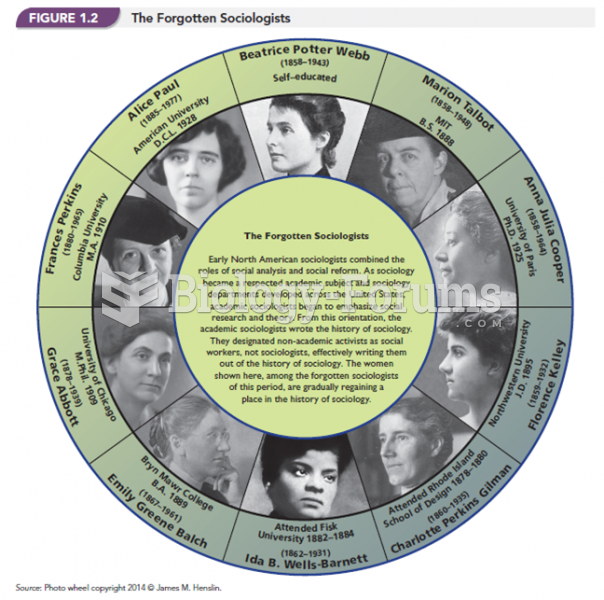Answer to Question 1
Responses should consider:
- Prior to 1930, federal laws prohibited nearly everything related to contraception, including providing information about it.
- These laws were contained in a bill referred to as the Comstock Act, named after its primary supporter, Anthony Comstock.
- The act made it illegal to sell or distribute contraceptive information or devices in any form.
- It made it a crime for any mention of sexually transmitted diseases to appear in print.
- Doctors and nurses were prohibited from discussing these issues with their patients.
- The only method available at the time was the rhythm method.
- Sanger was a nurse and mother of three children, and the one given credit for overcoming the Comstock Act and making contraception widely available.
- In 1912, she began to write and publish articles on female sexuality and on a woman's right to control her own reproductive body.
- After visiting a birth control clinic in the Netherlands where women were given the diaphragm, she returned to the U.S. and opened the first birth control clinic in Brooklyn, N.Y.
- The clinic was raided by police, and she spent 30 days in jail.
- She became a celebrity, and by 1916, 100,000 copies of her booklet Family Limitation had been distributed, and birth control clinics had begun to operate. Her later work for contraceptive research funding resulted in the development of the first hormonal contraceptive pill in the late 1950s.
- She is considered one of the founders of Planned Parenthood.
Answer to Question 2
Responses should consider:
- Contraception refers to preventing conception, which occurs at the moment the ovum and sperm cell join in the fallopian tube.
- Contraception is also about choice, allowing individuals to plan, when, or if, to conceive and bear children.
- Not all contraception methods are equally appropriate for all sexual lifestyles and life stages.
- Individuals should ask themselves some of the following questions:
- Am I engaging in sexual activities that involve any risk of pregnancy or the transmission of STIs?
- Am I confident that I am in a one-on-one, exclusive relationship in which both of us are free of diseases that may be sexually transmitted?
- How often do I engage in potentially risky sexual activities?
- Do I have (or am I likely to have) more than one concurrent sexual partner?
- How seriously would an accidental pregnancy disrupt my life?
- Will the method I choose conflict with my religious beliefs?
- Do I need to be in charge of contraception, or can I trust my partner to take care of it?
- Do I feel comfortable with using this method of contraception?
- Answering the above questions will help an individual to determine exactly what features he/she needs in a method of contraception.







